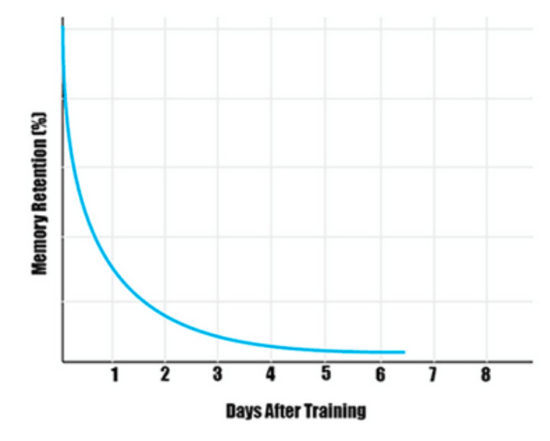Good service once earns one happy customer. Consistently good service builds a satisfied, loyal customer base.
Unfortunately, unless you’re a sole proprietor doing everything in your business, you can’t control how your customer service teams work at every moment. How do you make sure customers get a consistent, positive experience every time they interact with you?
Customer service needs to be at the heart of your business. It’s not something that’s limited only to the customer service team. Your company culture and the heart of everything you do need to revolve around serving your customers as well as possible.
This blog post explores 2 case studies - which highlight the dos and don'ts of customer service in 2020. But first, how can you lay the groundwork that makes it simple and rewarding for your employees to provide good service every time?
Building strong customer relationships
Before you can develop a framework for how you provide service, you need to understand what makes service good in the first place. What makes one customer walk away satisfied while another goes on to write a bad review about you?
The elements of good customer service are as follows:
- Focusing on customer value
- Making the experience hassle-free
- Meeting or exceeding customer expectations
Download our Individual Member Resource – Customer persona guide and template
Read our advice and use this ready-made template to create your own customer personas. It's as easy as filling out each box with the relevant information and you can quickly implement personas into your marketing strategy.
Access the Customer persona guide and template
Customer value
At the heart of good customer service is a strong focus on the value you’re providing the person you’re serving. This is the first element you need to embed into your customer service team and other business teams. Your business exists to give your customers what they need and to help them gain value from it. If they’re not getting value from you, they won’t return to or recommend you.
Customer service revolves around value provision because this team has the unique responsibility of helping people make use of what they have. Often, customers initiate contact with your employees only when they have questions, concerns, or problems that they can’t sort out on their own. In order to foster a strong relationship with every customer, you need to build your team that always operates with customer value in mind.
From the first interaction to aftersales service, customers should always be receiving service that’s valuable in that time and that specific situation. If they’re asking about how a product you offer would fit into their need, value to them is giving them honest feedback from a place of product knowledge. If they have a problem, value to that customer is a knowledgeable employee walking them through the steps to solve their problem and continue using the product to the fullest.
Although the specific value you provide at a certain moment will vary, everyone interacting with customers should understand the basics of how to identify the value they need and provide it.
Hassle-free experience
Valuable service means little when the method of receiving service is inconvenient for the customer. If, for example, a customer must wait on hold for 30 minutes just to speak with a customer service agent on the phone, they’ll be far less satisfied with the experience even if they get the resolution they were seeking.
Customers that are passed around to multiple different people, who have to wait a long time for service, or who have to contact your company multiple times for an answer are less satisfied. Do whatever you can in your power to make it as simple as possible for customers to get in touch and reach a resolution.
Some of this is related to the knowledge and understanding of the employees providing service. If your company keeps information segregated by departments, it will naturally take longer for a customer to reach a resolution if they bring their issue to the wrong person. All employees should have a base level of product or service knowledge, with continuous learning.
Technology has made it simpler to reduce hassle today. For phone service, you can create a single queue system that updates people on their position in the queue. Or, even better is to give customers an option to hang up and get placed in a call-back queue, relieving them of the burden of sitting on the phone waiting. Properly utilized CRM systems also make it easier to access specific customer information to get up to speed when someone brings up an issue.

Meeting or exceeding expectations
Every time someone contacts you, your team needs to provide over and above what they expect. The bare minimum should be a satisfactory experience where all the customer’s needs are met. A gold standard for your team would be to exceed customer expectations by providing them better service than they expected to receive.
This means different things for different companies and industries. Your job is to identify the expectations of the customer and then do your best to fulfill them.
Case study: Amazon customer service
Amazon is one of the few companies in the world that’s known specifically for their excellent customer service. They’ve managed to achieve this by being what they refer to as “customer-obsessed”. From the top-down, the whole company operates with a customer-centric mentality.
If you contact Amazon customer service, you can expect to get excellent service. There are far more compliments than complaints. Many times, the company goes beyond expectations to replace, refund, or otherwise compensate customers when mistakes occur, even if it’s not the company’s fault.
Amazon has only managed to achieve this level of consistently excellent service because they place a high value on providing incredible service. Because of their core belief in customer value, they have built a whole company culture around the idea that their customers deserve the best in everything, including customer service. The result? An army of loyal Amazon customers who order again and again.

Case study: Comcast customer service
On the opposite end of the spectrum sits Comcast. This company regularly makes it into lists of the worst companies for customer service in the US, usually topping it. Year after year they’ve failed to improve their service, continually providing a dissatisfactory experience. There are a number of complaints made about Comcast customer service itself, rather than the telecom services provided.

After pledging $300million to improve its customer service, the company has seen some improvements. While it’s no longer featured on the lists of worst companies in the US, there’s a lot more room for improvement if they want long-term, loyal customers.
Building consistency
How do you build a system that makes sure your business is more like Amazon and less like Comcast? Good customer service and consistency are teachable. Develop a system that makes it simple for employees to provide good service and easy to monitor how well service is being done.
You will build consistency by developing a customer service system that makes it excessively simple for your employees to provide excellent service. This can be accomplished with a few essential steps.
1. Identifying central needs
How can your employees meet the needs of customers if they don’t know what your customers need? You can’t predict what every customer needs before they reach out, but you can understand generally what they expect and prepare your employees for all those situations ahead of time.
Surveys and rating systems are useful in tracking this or learning about customer expectations. By asking people who contact you online or over the phone what their purpose or general need is, you can get an idea over time about what people tend to contact you for.
It takes time to dig up customer needs. Sometimes the obvious answers are not the right answers. Even the customers themselves don’t always know the exact need they have when they make contact. But, when you take the time to study customer needs, you’ll be able to uncover the real motives that drove the person to reach out and seek help from your company.
This is a job that can be outsourced to a professional third-party consultancy if you’re looking for unbiased results or if you don’t have the resources to dedicate to it yourself.
2. Setting up a process
After you’ve determined the central needs of your customers, you need to create a customer service process that helps them sort out their needs as efficiently as possible. From the customer’s perspective, inefficient customer service is poor service, no matter how much money or time it saves your budget.
Your process should be multi-faceted, encompassing all the different methods of service, including:
- Phone service
- Email service
- Live chat
- Front-line service
- Point of sale service
- Personal contact service
However you interact with customers and provide service, the best practices for doing so should be included in your process. No one should fall through the gaps because of poor planning.
In your process, you should lay out the steps that an employee needs to follow to provide the customer service experience you’re trying to give. This will likely look different for each company, as your customer needs, company culture, and service vision will be unique.
Your process should be thorough, but teachable. You shouldn’t dictate everything your employees say or do with a script, but you need to establish guidelines that anyone can learn to follow. Whether that means a step by step method for addressing each customer or a loose guideline for interactions, the process should make it possible for customers to get a similar experience from any customer service agent.
3. Implementation
Once a process is established, it’s time to train your employees and get them up to speed on your new way of approaching customer service. Implementation should be a long, thoughtful process. No matter how good the process is, poor implementation can ruin your good intentions.
Each employee should be evaluated to uncover their strengths and weaknesses. Some employees may already be providing a high level of service while others may not be. You don’t want to accidentally reduce the quality of service from your strong employees; all you want is to re-direct them to make sure they’re following the expected guidelines.
Some employees are better at certain aspects of service than others. For example, while one may be very friendly and empathetic, another could be a great problem solver or salesperson. Nurture these strengths and help each employee apply them to your new process, sharing their skills with others whenever possible. Wherever they’re weaker at providing service, help to compensate with extra training and direction.
Training is surprisingly effective for customer service. The more your employees at all levels understand your company, your products/services, and the value they’re providing to a customer, the better they can serve that customer. By taking the time to train employees and give them the right tools to deliver quality service, you’re investing in better service standards and stronger long-term customer relationships.
4. Regular evaluation & re-training
Employees who are trained once are not done being trained forever. Re-training helps to keep employees in the loop as to what the priorities of the company are, any new updates to products/services offered, and how to properly approach customers in a service role. Simple refresher courses are useful for keeping every employee at a consistent level of service without overburdening them.
Additionally, studies show that within one hour, people tend to forget 50% of the information they were presented, and up to 90% within a week. Retraining is necessary to reinforce anything that may have been forgotten in previous training sessions.

The goal of re-training is to make it second-nature to provide great customer service. Each employee should be so familiar with the customer service process and the preferred experience that they do it naturally without having to reference the written guidelines.
To make sure your employees are reaching the standard you desire in the first place, you need to set up a system to help evaluate your staff. Evaluations can be done at regular intervals or consistently throughout the year. Evaluations should look at how an employee performs over a period of time to develop a realistic picture of their skill, rather than watching closely on a single day. Based on evaluations, re-training can be targeted to improve specific areas where an employee is lagging behind.
Consistent customer service
There is no cut-and-paste formula for developing consistency in your customer service. However, these strategies and pointers should help you to understand what you need to do and the path forward. The actual service you provide will be unique to you, but the steps to formulate and develop that service can be borrowed from other companies before you.
For consistency of service to last, you have to build up the right way. Whether you’re a small or large company, start at the beginning with understanding what good service looks like in your context and how your customers want to be served. As long as you’re addressing these core concerns in every interaction, you’ll be on the right track.
Christine James believes that every customer has a voice. She is the Community Manager at
HissingKitty.com (a customer complaints website) and loves talking to customers on social media
about their challenges with Fortune 500 companies. Her work has been published on Huffington
Post, Inc., SocialMediaToday, and Thought Catalog.











